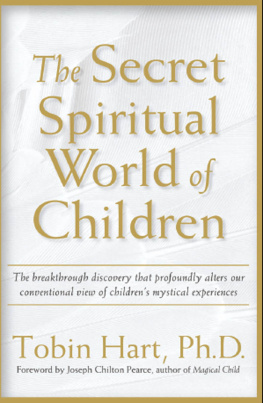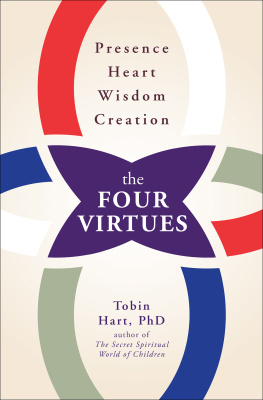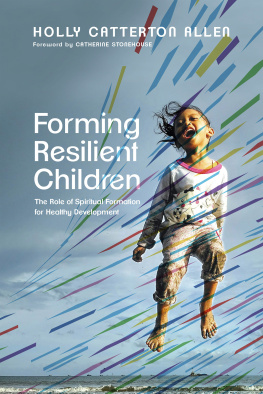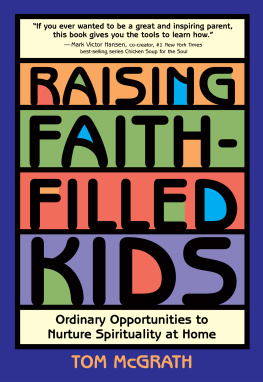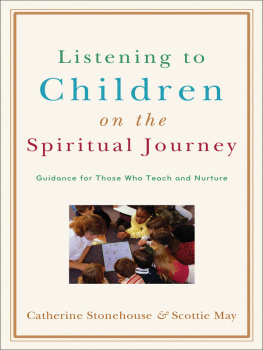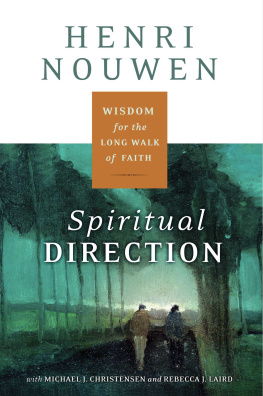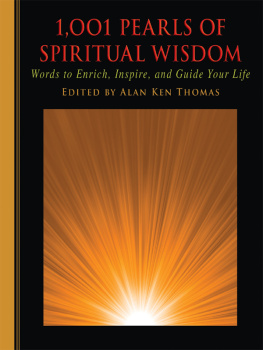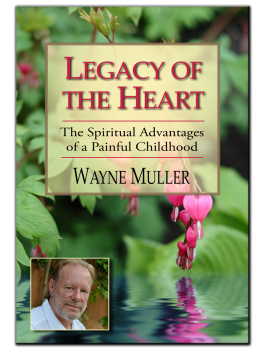The Secret Spiritual World of Children
The Secret Spiritual World of Children
Tobin Hart, Ph.D.

New World Library
Novato, California

Copyright 2003 by Tobin Hart
All rights reserved. This book may not be reproduced in whole or in part, stored in a retrieval system, or transmitted in any form or by any means electronic, mechanical, or other without written permission from the publisher, except by a reviewer, who may quote bried passages in a review.
This is a work of nonfiction based on the authors personal experiences, case studies, and interviews with peopel concerning spiritual experiences. The author has changed the names and indentifying characteristics of all persons whose stories are included in the book to protect their privacy, except for those who consented to the use of their real names. Any similarity between fictituous names used and those of living persons is entirely coincidental.
Cover design: Bill Greaves
Cover photo: Taxi
Interior page design: Bill Greaves
Interior page typography: Madonna Gauding
Editor: John Nelson
Copy editor: Barbara Doern Drew
Library of Congress Cataloging-in-Publication Data
Hart, Tobin.
The secret spiritual world of children / Tobin hart. 1st ed.
p. cm.
Includes bibliographical references.
ISBN 978-1-930722-19-4
1. Experience (Religion) in children. 2. Children Religious life.
3. Spirituality. 4. Spiritual lifeNew Age movement. I Title.
BV4571.3.H37 2003
204/.2/083dc21 0311 CIP
10 9 8 7 6 5 4
Contents
For Maia and Haley
I t feels like I have been collecting golden threads. I have had the grace to hear the intimate stories of childhood from so many individuals, too many to thank by name here. These accounts have been the heart and soul of this research, and I am extraordinarily grateful for them. Hopefully I have woven these threads into something that touches others, as I have been so deeply touched.
Special gratitude goes to my agent Stephanie von Hirschberg, whose expertise and vision have been instrumental in shaping this book; my graduate students, for their powerful and playful feedback, ongoing dialogue, research, and also hard work in helping to organize the First U.S. Conference on Childrens Spirituality; John Nelson, for his thoughtful and sensitive editing, and Barbara Doern Drew, for her careful polishing; Peter Nelson and Kaisa Puhakka for their guidance; Don Rice and my colleagues at that well-kept secret of innovation, the Department of Psychology at the State University of West Georgia, for their support; Scott Guffey, Carey Giles, Ted Smith, and Chris Johnson, for their expert assistance; and the team at the Child- Spirit Institute, for ongoing support with all phases of this project.
Love and appreciation beyond measure I give to Haley and Maia Hart, who have been the impetus and inspiration for this whole project.
My deepest thanks are reserved for Mary Mance Hart, for all she is and all she does. Her touch is on all of this work.
O ne value of a book is its ability to disturb us, move us beyond our comfort zone, outside the boundaries of our platitudes and common assumptions, forcing us to look anew at issues we had explored and thought to be closed topics. Such has been my case with this extraordinary and magnificent book by Tobin Hart.
To be asked to write a foreword for such a work was both flattering and intimidating. Knowing something of the professional and spiritual stature of the book and author, I was flattered; after reading the work I was somewhat intimidatedfor this book is an immense achievement and to introduce it is no casual task.
When I consider the brilliant observations and analyses made in the last century by the great pioneers in child development, I am astonished that the key element, childrens inherent spiritual nature, was missed for so long. I had thought of matters of the spirit to be essentially adult fare, grist for the mill of mature minds. As father of five children, grandfather of twelve, and great-grandfather of one, I am chagrined that for so long a time I did not see what Tobin Hart has seen, even as I am delighted to be shown.
How, in fact, could the issue of child-spirit be other than that of our species-spirit as a whole, since the child and its wondrous world embrace the whole of life from the beginning? Surely the following examination of childrens innate spirituality examines both our individual and specieswide spirit as well. And, as you will find can become again as a little child, a priceless inner realm may open to us. And who better than a child can demonstrate or model for us what that means? Even a brief survey of this books table of contents spells out the major milestones of that royal road the child longs to travel: wonder, awe, exuberant excitement; seeing the invisible, the intuitive knowing beyond the senses; creative inner sight that, if allowed, turns every event into playthat play that is our divine right and the foundation on which intelligence and creativity grow. Providing for these in our childs unfolding can provide a bridge across the gap the years have wrought between our own heart and mind. We, too, can discover divine play. Through mentoring and nurturing a childs spiritual life, we can find, revive, and/or enrich our own.
Years ago Gerald Jampolsky, a psychiatrist specializing in child dysfunctions, reported an influx of parents concerned that their children were having psychotic episodes. The children ranged in age from three or four to seven or so, the heart of that stage giving us what Jean Piaget called the child of the dream or Rudolph Steiner saw as the ethereal child: one foot on earth, the other still in the imaginal world of the spirit, intuitively aware on levels later lost. I considered most of the events recorded by Jampolsky essentially psychic in naturethe children reporting sensory perceptions, events, and phenomena the parents themselves did not perceive. After reading Tobin Hart, I have revised my concept of psychic as well as spiritual.
Along about the time of Jampolskys work, Blurton Jones, a British ethologist working with Nobelist Nikos Tinbergen, gave us, perhaps unknowingly, an invaluable clue to the inner world of the child. He reported that in cultures throughout the world, toddlers, on initially encountering an unknown object or event, will stop and point toward the novelty, looking back to check out the caretakers or parents response. Before following through with a tactile, direct sensory exploration of the new unknown, through which the brain builds its corresponding structure of knowledge of that event, a here, the issue of spirit stretches us beyond religion, psychology, philosophy, or idle speculation.
Indeed, Tobin Hart courageously and clearly delineates between spirit and religion, an issue of serious import in this transitory age wherein we are, if unknowingly, shifting from the bonds and bondage of religion to the light and wings of spirit, that state toward which our great model pointed some two millennia ago. Harts exploration of the spiritual world of children deals with the juice of life itself, that which pulses through our veins and lifts us beyond the beasts and perhaps a bit above the angels. And, just as with our species-spirit, a childs spirit is not some casual sentiment to be added to his or her curricula of life like a spice or bit of seasoning, but rather it is the essence of life itself. The subject of childrens spirituality branches out until it embraces every aspect of the childs life, that of the eventual adult, and so all of us.

